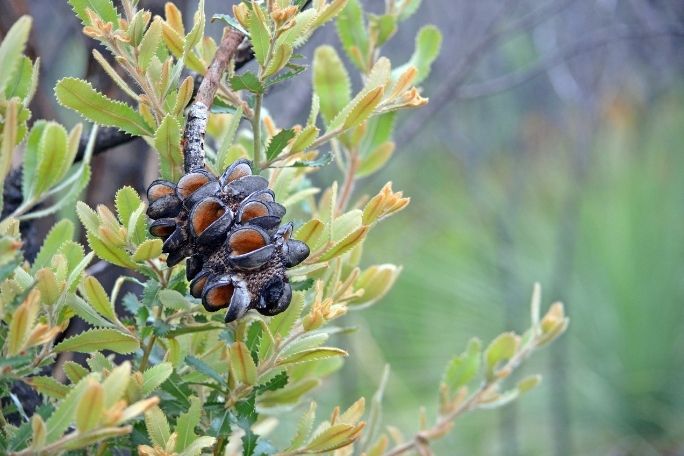Lesson summary
Students explore some of the ways that Australian plants are adapted to bushfires. They begin by reviewing their prior knowledge of how plants respond to fire, before exploring and defining the term ‘adaptation’. They then think about some of the Australian plants they are aware of and the features these plants have, before exploring some of the ways Australian plants have evolved to live with fire. Students then head outside to observe some of the particular features or traits of plants, recording their observations through rough sketches. These rough sketches can then be used as the basis for more formal scientific drawings.
Learning intentions:
Students understand...
- understand what the term ‘adaptation’ means
- recognise some of the adaptations plants have evolved to live with fire.
Success criteria:
Students can...
- conduct and communicate research
- create a scientific drawing
- participate in class and group discussions
- work independently and collaboratively.
Lesson guides and printables
Lesson details
Curriculum mapping
Australian Curriculum content descriptions:
Year 5 Science:
- Living things have structural features and adaptations that help them to survive in their environment (ACSSU043)
- Identify, plan and apply the elements of scientific investigations to answer questions and solve problems using equipment and materials safely and identifying potential risks (ACSIS086)
- Communicate ideas, explanations and processes using scientific representations in a variety of ways, including multi-modal texts (ACSIS093)
Year 6 Science:
- The growth and survival of living things are affected by the physical conditions of their environment (ACSSU094)
- Communicate ideas, explanations and processes using scientific representations in a variety of ways, including multi-modal texts (ACSIS110)
Syllabus outcomes: ST3-10LW, ST3-4WS, ST3-11LW
General capabilities: Critical and Creative Thinking, Literacy
Cross-curriculum priority: Sustainability OI.2, OI.9
Relevant parts of Year 5 Science achievement standards: Students analyse how the form of living things enables them to function in their environments and communicate their ideas and findings using multimodal texts.
Relevant parts of Year 6 Science achievement standards: Students describe and predict the effect of environmental changes on individual living things and construct multimodal texts to communicate ideas, methods and findings
This lesson is part of the wider unit of work: Beyond the Bushfires – Primary
Time required: 120 mins
Level of teacher scaffolding: Medium – lead students in class discussions, lead students in outdoor activities.
Resources required
- Device capable of presenting video to the class
- How Have Plants Adapted To Bushfires? – Factsheet
- Pencils
- Scientific Drawing Guidelines
- Student Worksheet – one copy per student
- Whiteboard
- Workbooks
Skills
This lesson is designed to build students’ competencies in the following skills:
- Communication
- Creativity
- Critical thinking
- Digital literacy
- Collaboration
Additional info
In partnership with The Conversation, the Beyond the Bushfires series brings the words of scientists who are actively involved in research and science communication into classrooms throughout Australia. Students will explore evidence-based research embedded in the context of real-world practice.
Additional thanks to the Ian Potter Foundation, John T Reid Charitable Trusts and The Myer Foundation, for generously supporting the development of these lessons.


Welcome back!
Don't have an account yet?
Log in with:
By signing up to Cool.org you consent and agree to Cool's privacy policy to
store, manage and process your personal information. To read more, please see
our privacy policy here(Opens in new tab).
Create your free Cool.org account.
Many of our resources are free, with an option to upgrade to Cool+ for premium content.
Already have an account?
Sign up with:
By signing up to Cool.org you consent and agree to Cool's privacy policy to
store, manage and process your personal information. To read more, please see
our privacy policy here(Opens in new tab).